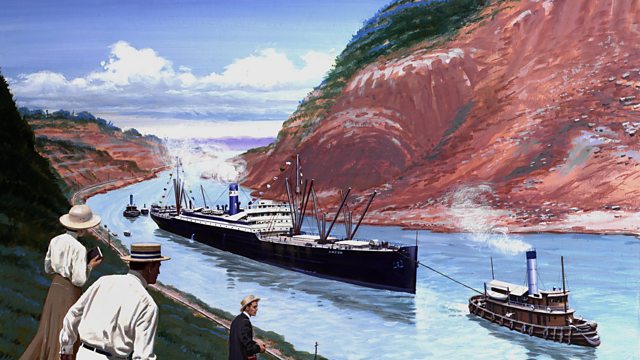The Panama Canal: The real story behind the engineering triumph
One of the most difficult engineering projects ever undertaken, but what was the human cost of this spectacular enterprise?
Completed in 1914, the Panama Canal has long been regarded as a triumph of American ingenuity, a conquest over nature that helped secure the United States’ position as a world power. Taking ten years to build, it opened up new trading routes between East and West by providing a vital waterway between the Atlantic and Pacific oceans. But what was the real story behind this challenging engineering project? How were the Panamanians affected? Who were the tens of thousands of workers who built the canal? And what was the environmental impact of work that literally cut through a mountain and redirected two oceans? And with climate change, will the Panama Canal be such a vital waterway in the future?
Joining Bridget Kendall, is the Panamanian academic Dr Marixa Lasso, author of “Erased: The Untold Story of the Panama Canal”, the first major book on the Canal from the Panamanian point of view; Julie Greene, Professor of History at the University of Maryland, and the author of “The Canal Builders: Making America’s Empire at the Panama Canal”, and Paul Sutter, Professor of Environmental History at the University of Colorado, Boulder, and author of a forthcoming book on the impact of US public health measures during the construction of the Panama Canal.
Producer: Anne Khazam
(Image: A painting depicting the S.S. Ancon, the first ship to pass through the Panama Canal on the opening day on 15 August,1914 in the Canal Zone, Panama. Credit: Illustration by Ed Vebell/Getty Images)
Last on
More episodes
Broadcasts
- Thu 29 Jul 2021 09:06GMT����ý World Service
- Thu 29 Jul 2021 23:06GMT����ý World Service
- Sun 1 Aug 2021 13:06GMT����ý World Service
Featured in...
![]()
Technology and innovations—The Forum
Machines, materials and methods that changed how the world works
What is the role of libraries in the digital age?
Podcast
-
![]()
The Forum
The programme that explains the present by exploring the past




